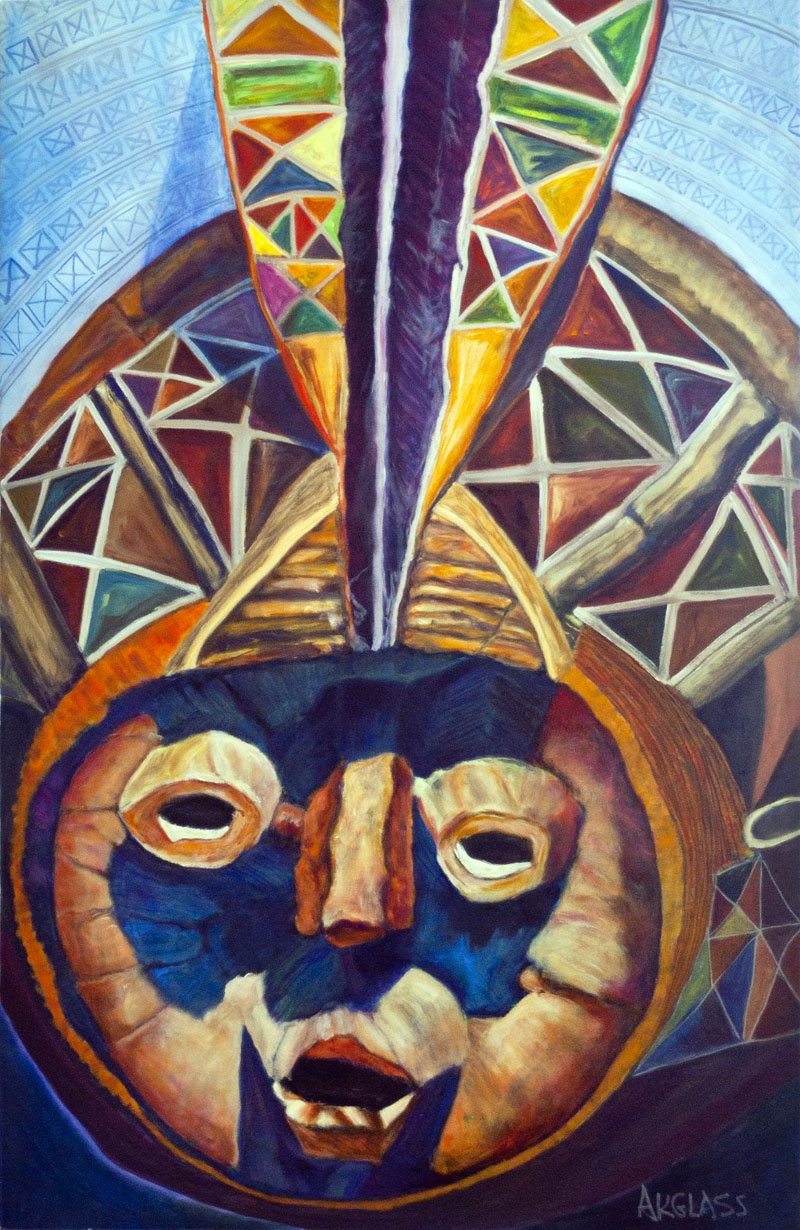 Image 1 of 1
Image 1 of 1


Maiden Spirit Mask
Painting of an African Mask
Unframed Oil on Canvas Original
40" x 26"
Igbo People, Nigeria
In the Igbo culture, there are two basic types of masquerades: visible and invisible. The visible masquerades are meant for the public and are often more entertaining. Masks used offer a visual appeal through their shapes and forms. In these visible masquerades, performances of harassment, music, dance, and parodies are acted out.
The invisible masquerades take place at night. Sound is their main tool. The masquerader uses his voice to scream so it may be heard throughout the village. The masks used are usually fierce-looking, and their interpretation is only fully understood by the society’s members. These invisible masquerades call upon a silent village to strike fear into the hearts of those not initiated into their society.
One in a series of eleven paintings inspired by tribal African masks from museum or private collections. This mask is in the collection of the de Young Museum, San Francisco. The mask was in use during the 19th and early 20th centuries.
Painting of an African Mask
Unframed Oil on Canvas Original
40" x 26"
Igbo People, Nigeria
In the Igbo culture, there are two basic types of masquerades: visible and invisible. The visible masquerades are meant for the public and are often more entertaining. Masks used offer a visual appeal through their shapes and forms. In these visible masquerades, performances of harassment, music, dance, and parodies are acted out.
The invisible masquerades take place at night. Sound is their main tool. The masquerader uses his voice to scream so it may be heard throughout the village. The masks used are usually fierce-looking, and their interpretation is only fully understood by the society’s members. These invisible masquerades call upon a silent village to strike fear into the hearts of those not initiated into their society.
One in a series of eleven paintings inspired by tribal African masks from museum or private collections. This mask is in the collection of the de Young Museum, San Francisco. The mask was in use during the 19th and early 20th centuries.
